Honda Amaze [2013-2016] 1.2 E i-VTEC
- Amaze [2013-2016]
- Specs & Features
- Variants
- Colours
- User Reviews
![Honda Amaze [2013-2016] 1.2 E i-VTEC Honda Amaze [2013-2016] 1.2 E i-VTEC](https://imgd.aeplcdn.com/664x374/cw/cars/honda/amaze.jpg?q=80)
![Honda Amaze [2013-2016] Left Rear Three Quarter Honda Amaze [2013-2016] Left Rear Three Quarter](https://imgd.aeplcdn.com/664x374/ec/CF/3D/10416/img/l/Honda-Amaze-Rear-three-fourth-16779.jpg?v=201711021421&q=80)
![Honda Amaze [2013-2016] Interior Honda Amaze [2013-2016] Interior](https://imgd.aeplcdn.com/664x374/ec/CF/3D/10416/img/l/Honda-Amaze-Interior-16780.jpg?v=201711021421&q=80)
![Honda Amaze [2013-2016] Front View Honda Amaze [2013-2016] Front View](https://imgd.aeplcdn.com/664x374/ec/9633/img/m/Honda-Brio-Amaze-Diesel-Front-view-14789_ol.jpg?v=201711021421&q=80)
![Honda Amaze [2013-2016] Front View Honda Amaze [2013-2016] Front View](https://imgd.aeplcdn.com/664x374/ec/23/B1/10277/img/m/Honda-Amaze-(Brio-sedan)-Front-view-16302_l.jpg?v=201711021421&q=80)
![Honda Amaze [2013-2016] Front View Honda Amaze [2013-2016] Front View](https://imgd.aeplcdn.com/664x374/ec/AF/6E/13826/img/orig/Honda-Amaze-Front-view-29135.jpg?v=201711021421&q=80)
![Honda Amaze [2013-2016] Front View Honda Amaze [2013-2016] Front View](https://imgd.aeplcdn.com/664x374/ec/21/BF/14156/img/m/Honda-Amaze-Front-view-30379_ol.jpg?v=201711021421&q=80)
![Honda Amaze [2013-2016] Front View Honda Amaze [2013-2016] Front View](https://imgd.aeplcdn.com/664x374/ec/14/AA/14556/img/m/Honda-Amaze-Front-view-32140_ol.jpg?v=201711021421&q=80)
Honda Amaze [2013-2016] 1.2 E i-VTEC Review
Is Honda’s first diesel offering for India as astounding as they make it out to be?
Introduction

Diesel. It is what powers eighty per cent of new cars sold in India today, and diesel variants are proving not only more efficient, but quicker than their petrol counterparts as well. Honda, as a Japanese manufacturer, has never had a wide range of diesel engines, although there has always been a 2.2-litre four cylinder that was developed for the European market. However, that engine is too big for our requirements, as it was developed for the Accord and CR-V. The big H has recently launched a 1.6-litre diesel Civic in Europe, and that engine has given rise to the 1.5-litre i-DTEC that will power the Amaze. Welcome, then, to Honda’s first diesel for the Indian market. Will it be a winner as Hondas always have been?
Exterior
The Amaze looks proportionate in the flesh, unlike some of its images where it looks a little dumpy at the rear. The front is all Brio except for the grille, which has two large horizontal chrome bars in it. Move around to the front three-quarter view, and things change significantly. The wheels are different, the roofline is different, and you notice those two prominent creases that make up the shoulder line of this car.

From the side they are what grabs your attention, which is a good thing – the Amaze refuses to look boring, whether you like the way it looks or not. At the rear the tail-lamps are reminiscent of the City’s, and there is a large chrome strip that runs across the boot in much the way the Dzire and Scala have. Fit and finish is of a high order, and we like the new blue that the Amaze is available in. There is just a single panel gap, that between the boot lid and the tail lamp, that is large and ungainly in an otherwise perfect car.

Interiors

It is familiar, thanks to many elements being carried over from other Honda models. The audio system has been carried over from the City and not the Brio. The steering wheel has audio controls mounted on it as well. The driver’s seat in the top-end VX variants adjusts for height, and Honda claims that the 50mm difference between its highest and lowest setting is the biggest in its class. The seats themselves are comfortable, and the steering adjusts for rake.

The gearshift is standard Honda issue, the golf-ball tip good to hold. Rear legroom is surprisingly good, with a little extra kneeroom being offered by the scooped-out seat backs of the front seats. The rear is comfortable, and we appreciate that the rear doors also have bottle holders in addition to the pockets in both the seat backs of the front seats. If you’re a backseat person, you’ll love the Amaze for the sheer practicality it offers – you’ll have access to those seatback pockets, two bottle holders in the doors, one behind the handbrake, and two more cupholders in the pull-down armrest! Legroom is also contributed to by the 2405mm wheelbase, which has been increased from the Brio’s wheelbase.

The boot is another feature that will win customers over. Despite coming in at under four metres, the boot is a 400 litre one and most of it is usable, with minimal intrusions from suspension struts. Unfortunately, in the interest of saving cost, the rear seats don’t split or fold, but we can expect these features to get added once the car is manufactured in large enough numbers, either for domestic consumption or for export. The audio system is a competent unit, with small ergonomic adjustments like the USB connector being at the bottom of the console that makes life in a Honda so much easier.

NVH from either the petrol or diesel is very well controlled, with the petrol being completely silent at low revs and making a lovely noise at high revs. The diesel is on par with the competition (Honda attributes it to its all-aluminium construction, which makes it hard to contain noise and vibrations) but it never has so much noise that it becomes unpleasant.

The electrically adjustable mirrors also fold electrically, but don’t fold on the vehicle being locked like the Micra/Pulse do. There isn’t any climate control, but a very effective air-con is present, aided by a windshield that rejects heat. Everything feels up to scratch except for the new stalks mounted behind the steering wheel – the finish on the left one was especially bad, with sharp edges on more than one car’s left stalk. Still, that is a stalk that is used mostly during the monsoon, so most owners will not find that a problem.

Engine and transmission

Be warned, the petrol variants will be a small paragraph in this article: after all, you aren’t here to find out how refined or good the petrol is. You already know that, because it is the same engine that powers the Brio and Jazz. In fact, it even has the same power output of 88PS@6000rpm and 109Nm@4500rpm. The petrol will weigh 1005kg and 1010kg for the manual and automatic variants. Yes, the same five-speed gearbox from the Brio automatic is present in the Amaze. ARAI fuel efficiency figures are 18.0kmpl and 15.5kmpl for the manual and automatic respectively. It must be noted that the five speeds of the auto ‘box make it one up on the competition like the Dzire, which have only four speeds. Strangely enough, the AT has a larger turning radius at 4.7 metres, where the MT is 4.5 metres.

The diesel, then. Let’s start with a few facts: it has 100PS@3600rpm and 200Nm@1750rpm, figures that make it class-leading. Not only this, the 1498cc four-cylinder manages a torque curve that any sports car manufacturer will be proud of – it’s as flat as today’s car sales, and doesn’t drop off until the redline is near. There isn’t any high-tech malarkey behind this; the engine uses a DOHC four-valve setup coupled with a common-rail injection system that is capable of a maximum of three injections per cycle. The turbocharger is a fixed-geometry one supplied by Honeywell, and it isn’t a twin scroll one. The fuel efficiency is rated at 25.8kmpl, the highest in the country. Honda has also developed the world’s least viscous diesel engine oil for the Amaze diesel. It is a fully synthetic oil, but it will not cost as much as regular fully synthetic oil. Regular oil can also be used, but you can expect a fuel efficiency drop of five per cent with it. Oil changes have to be made every 10,000km or six months. Another surprising fact about this i-DTEC is its construction; it is an all-aluminium unit, which means that NVH is hard to control, but it weighs in at a featherweight 152kg.
This, then, is why Honda took so long to launch its diesel; they wanted to get it right the first time. And by the specs, it certainly seems like they have done so.
Ride and handling

The Amaze is biased towards handling rather than ride comfort, and that is something we appreciate. The diesel feels stiffer thanks to the extra weight in the nose. Suspension is par for the course with McPherson struts in the front and torsion beams at the rear. Brakes get a disc/drum setup, like the rest in the segment. Worthy of special mention is the gearshift; whether petrol or diesel , it will make you want to shift gears just for the sake of the low effort, and a lovely positive snick when it engages. The steering is electrically assisted, but feel and feedback is good. It isn’t as good as a hydraulic unit, but it is one of the better electric units we’ve driven. The brakes have good bite and progression, although on the narrow, twisty roads of Goa, the brakes of the automatic seemed to start fading after a while thanks to the lack of engine braking that can be had with the manuals.

The tyres are understandably biased towards fuel efficiency, but the MRFs present on our test car were surprisingly tenacious, and when grip transitioned to slip, it did so progressively and without drama. We’d certainly like to see how the Amaze performs when fully loaded, because the Civic and City have a habit of squatting at the rear with five passengers and a full boot. Honda assures us that the Amaze belly won’t scrape any speedbreakers because of the shorter wheelbase and the stiff suspension, but we’ll have to wait for a full road test to find out for sure.

Specifications & Features
- Specifications
- Features
- Specifications
- Features
Specifications
Engine & Transmission
- Engine1198 cc, 4 Cylinders Inline, 4 Valves/Cylinder, SOHC
Timely services will keep a motor efficient and in top shape.
- Engine Type4-Cylinder, SOHC i-VTEC
The official title given by the manufacturer in terms of the name of the engine, the displacement and the number of cylinders.
A bigger displacement and more than four-cylinders generally indicate a performance-oriented engine.
- Fuel TypePetrol
All cars in India either run on petrol, diesel, CNG, LPG or electric power.
- Max Power (bhp@rpm)87 bhp @ 6000 rpm
Gives a good idea of the performance of the vehicle under full thrust. A higher figure here usually means a higher top speed as well.
Higher the power, the peppier the engine but it can also affect fuel economy.
- Max Torque (Nm@rpm)109 Nm @ 4500 rpm
Relates to in-gear acceleration. A higher figure here means better roll-on acceleration, fewer gear shifts, and possibly better fuel efficiency.
The more torque at low RPM range makes the engine feel more responsive. It also allows the engine to run smoothly without too many gear changes.
- Mileage (ARAI)18 kmpl
This is the maximum fuel efficiency that an engine gives. All numbers are provided by the manufacturer based on tests conducted and specified by the standards of the ARAI (Automotive Research Association of India)
Such fuel efficiency attained while driving in special conditions makes it unlikely to get it in real-world conditions
- DrivetrainFWD
Cars come with different drivetrain configurations depending on the segment.
Front-wheel drive (FWD) is most common in mainstream cars while expensive cars or SUVs come with rear-wheel drive (RWD) or all-wheel drive (AWD).
- TransmissionManual - 5 Gears
Type of transmission used to transfer power from the engine to the wheels
A manually operated transmission is the most popular type, thanks to its simplicity and low cost. Varied types of automatic transmissions are also available.
Dimensions & Weight
- Length3990 mm
The length of the car decides its segment. In India, cars that are less than 4 metres in length enjoy reduced excise duties.
- Length: 3990
Longer length results in more cabin space. It also adds to straight line stability.
- Width1680 mm
A car's width is defined as its widest point without its mirrors.
- Width: 1680
Although more width gives you more lateral space inside the cabin, it makes the car more difficult to park in narrow spots.
- Height1505 mm
The height of the car denotes the highest point of the vehicle from the ground.
- Height: 1505
Taller the car, the more headroom there is on offer inside the cabin. However, a tall boy stance also affect the car’s centre of gravity which can cause more body roll.
- Wheelbase2405 mm
The space between the center of the front and rear wheels.
- Wheelbase: 2405
The longer the wheelbase, the more space there is inside the cabin.
- Ground Clearance165 mm
It’s the space between the lowest point of the car and the ground.
- Ground Clearance: 165
If the car has a good amount of clearance, it’s easier for it to clear big speed breakers and overall, deal with bad roads.
- Kerb Weight950 kg
The total weight of the vehicle with all the standard equipment and all the required fluids.
A lightweight car will always be more efficient and easier to manoeuvre whereas a heavy car would give you a sense of solidity while driving.
Capacity
- Doors4 Doors
The number of doors define the category of car. For example – four door means sedan, two-door means coupe while five-doors usually refer to a hatchback, MPV or an SUV.
- Doors: 4
- Seating Capacity5 Person
The number of people that can be seated comfortably in the car, which has also been mandated by the car manufacturer.
- Seating Capacity: 5
- No of Rows2 Rows
Smaller cars usually have two rows which can seat five, but some SUVs and MPVs have three rows and can seat around 7-8 passengers.
- Bootspace400 litres
Boot space defines how practical the car is with respect to how much luggage it can carry.
- Bootspace: 400
A boot with a large and wide opening is ideal for loading heavy items. Additionally, a lower loading height also makes it easy to put in luggage.
- Fuel Tank Capacity35 litres
The official volume of the fuel tank of a car, usually denoted in litres.
If a car has a large fuel tank, it can cover long distances without refuelling.
Suspensions, Brakes, Steering & Tyres
- Front SuspensionMcPherson Strut
Almost all cars in India use an independent front suspension which is usually the MacPherson Strut type.
- Rear SuspensionTorsion Beam
The rear suspension can either be non-independent or independent.
Most of the budget cars have non-independent suspension while the more expensive ones get independent rear suspension which offers better bump absorption.
- Front Brake TypeDisc
Most of the vehicles sold in India get ventilated or non-ventilated disc brakes upfront.
- The ventilated discs are more popular thanks to them providing better stopping power and it also works well in hot conditions.
- Rear Brake TypeDrum
In affordable cars, drums brakes are fitted at the rear as they are cost effective.
Disc setup at the rear is now getting more popular as cars are getting faster in the real world.
- Minimum Turning Radius4.5 metres
The official kerb-to-kerb minimum radius a car takes to complete a 180-degree turn.
Shorter the turning radius, the lesser space you need to make a tight turn or to take a U-turn.
- Steering TypePower assisted (Electric)
Almost all steering systems in cars today have an assist to help park them better at low speeds - these can be hydraulic, electro-hydraulic or electric.
- WheelsSteel Rims
The wheels used on cars are either steel rims with plastic wheel cover hub or alloy wheels on higher spec models or expensive cars.
Razor cut, or diamond cut alloy wheel design are not getting more popular. Manufacturers usually offer these in top-end trim of their car models.
- Spare WheelSteel
Important in a country with varying quality of roads, spare wheels ensure one doesn’t get stranded when one of the main tyres gets damaged.
Select premium car models feature space savers (smaller than the stock wheels) to save on boot space.
- Front Tyres175 / 65 R14
The profile/dimension of rubber tyre that fits on the front wheels.
- Rear Tyres175 / 65 R14
The profile/dimension of rubber tyre that fits on the rear wheels.
Features
Safety
- Overspeed Warning-
Mandatory safety system for cars sold in India, a single beep is emitted after 80kmph and continuous ones after 120kmph
- Lane Departure Warning-
This function detects when the car is drifting out of its lane and cautions the driver through audio/visual alerts
- Emergency Brake Light Flashing-
The brake lights flash in a quick intermittent fashion to indicate to the following vehicles to slow down quicker than usual
- Forward Collision Warning (FCW)-
The driver is warned of an impending crash due to stopped/slowing vehicles ahead of them
- Automatic Emergency Braking (AEB)-
This system automatically stops the car if it senses an obstacle where the driver fails to take action
It is imperative to pay attention while driving and rely less on such systems
- High-beam Assist-
This feature spots oncoming vehicles at night to shift the headlight between high and low beam
- NCAP Rating-
The official crash test safety rating given to a car by one of the many testing agencies around the world
- Blind Spot Detection-
Blind Spot Detection systems use sensors to detect and alert the driver of any sudden movements in his/her blind spot
- Lane Departure Prevention-
This feature automatically steers the car to prevent it from moving out of the lane when there is no driver input
- Rear Cross-traffic Assist-
An assistance feature that alerts the driver who is backing out of a parking space if another vehicle is approaching
One must always be cautious of pedestrians, children and other obstacles when backing up.
- Airbags-
- Rear Middle Three Point seatbeltNo
Safer three-point seatbelts for passengers seated in the middle of the second row of seats.
Budget cars are usually fitted with more economical lap belts for the middle-occupant.
- Rear Middle Head RestNo
A headrest for the middle occupant of the second-row of seats.
Budget cars are usually not offered with headrests for the middle occupant of the second-row to save on costs. Headrests are instrumental in reducing whiplash injuries in case of an accident
- Tyre Pressure Monitoring System (TPMS)No
A digital gauge that provides the live status of the air pressure in every tyre of a car.
For accurate readings, ensure that the sensors on the rim are not tampered with during any wheel/tyre repairs
- Child Seat Anchor PointsNo
Anchor points or strap systems built into car seats to keep child seats in place, especially during a crash
ISOFIX is an international standard for child seat anchor points, but not all car manufacturers follow this standard
- Seat Belt WarningYes
Mandatory fitment in cars sold in India, emits loud beeps when it detects that occupants are not wearing their seatbelts.
Seat belt warning is mandatory for front-seat occupants, but it is recommended that all occupants wear seat belts.
Braking & Traction
- Anti-Lock Braking System (ABS)No
An electronic system that prevents the tyres from locking and skidding in emergency braking situations by pulsing the brakes (quickly releasing and reapplying the brakes)
ABS is a great accident prevention technology, allowing drivers to steer while braking hard
- Electronic Brake-force Distribution (EBD)No
An electronic system that redirects braking forces among the four brakes to stop the car as quickly and stably as possible
- Brake Assist (BA)No
A system that increases brake pressure to help the car stop quicker
Even when emergency braking, it is observed that drivers don’t apply maximum brake pressure through the pedal, the BA system provides additional pressure to help stop the car quicker
- Electronic Stability Program (ESP)No
System designed to improve car stability and control, especially when the car is accelerating.
ESP or ESC cannot increase traction but rather improve control or help regain control in slippery conditions.
- Hill Hold ControlNo
A feature that prevents the car from rolling backwards when stopped on a slope
- Traction Control System (TC/TCS)No
This system cuts power to those wheels that are spinning without grip/traction
Given the option, keep traction control on all the time.
- Limited Slip Differential (LSD)No
This function prevents wheelspin and maximises traction by shuffling torque between wheels
It is also a nifty safety feature since it offers more control over a vehicle's power delivery
- Differential LockNo
Locking differentials split power/torque evenly among both tyres on an axle.
In off-road vehicles, locking differentials allows for better traction when one of the wheels is in the air, in FWD/AWD cars allows for better corner traction and in RWD sports cars allows for drifting around corners.
Locks & Security
- Engine ImmobiliserYes
A security device that prevents the engine from being started unless the key is present
- Central LockingYes
This feature let's one unlock all the doors remotely or with a key
- Speed Sensing Door LockNo
This feature automatically locks the car's doors when it reaches a preset speed
A convenient feature for those who can't remember to lock the doors
- Child Safety LockYes
Such locks are built into the rear doors to prevent rear seat occupants from opening the doors
Comfort & Convenience
- Electronic Parking Brake-
- Air ConditionerYes (Manual)
The different types of air-conditioning systems used to cool the cabin
Maintaining the lowest temperature and first blower speed offers the best results.
- Front AC-
- Rear AC-
- HeaterYes
This feature allows warm air to pass through the air-con vents for heating the cabin
- Vanity Mirrors on Sun VisorsNo
Compact mirrors fitted to the inside of the sunvisor
- Cabin Boot AccessNo
The option of being able to access the boot space while sitting inside the car
- Anti-glare MirrorsManual - Internal Only
These mirrors negate the glare from headlight beams of cars behind you
Since a large chunk of people love driving around in their high beam, these mirrors come in handy
- Parking AssistNo
A feature that aids drivers park with ease and greater precision using sensors/cameras
It comes as a boon for drivers who are not used to parking in tight spots
- Parking SensorsNo
Sensors that are usually located on the bumpers of a car to assist/alert the driver while parking
It takes the stress out of manoeuvring in confined spaces
- Cruise ControlNo
A system that automatically controls the speed of the car
- Headlight and Ignition On ReminderNo
An alert that warns one from leaving the car with the headlight and ignition switched on
- Keyless Start/ Button StartNo
When fitted, this system allows the car to be switched on without removing the key from the driver’s pocket or vicinity.
Keyless entry and start/stop (KESS) systems in some cars also include operation via a smartphone.
- Steering AdjustmentTilt
A function where the steering wheel moves up/down, in/out as per the driver's requirement
When both rake and reach adjustments are incorporated, it makes for a tailormade driving position
- 12V Power OutletsNo
This socket provides current to a cigarette lighter style 12 volt plug
It helps charge smartphones, tablets, laptops, rechargeable batteries and other USB chargers. It also powers a compressor that inflates tyres and the humble cigarette lighter!
Telematics
- Find My Car-
An app based feature that allows one to find where their car is located/parked
- Check Vehicle Status via App-
The requisite app will provide information regarding various functions such as speed and fuel alerts
- Geo-fence-
A service that triggers actions like notifications and security alerts when a car enters/leaves a set location
- Emergency Call-
A call that's made automatically by the car to the local emergency services in the event of a crash
- Over The Air (OTA) Updates-
Similar to how smartphones receive updates, a vehicle too (if equipped with connected car features) receives updates over the air via a cellular or WiFi connection
Timely installation of updates keeps the system up-to-date
- Remote AC: On / Off via App-
The smartphone app turns on the car's AC to attain the required cabin temperature even before one boards it
More so comes in handy when cabin temperatures are extreme before you board the vehicle
- Remote Car Lock/Unlock via App-
The smartphone app allows one to remotely lock/unlock the car's doors from just about anywhere
This function is helpful when the key fob isn't working properly
- Remote Sunroof: Open / Close via App-
The smartphone app lets you remotely open/close the sunroof of your car
This function saves valuable time by not having to be physically present to shut the sunroof, which could otherwise result in the interiors getting damaged by rain/intruders.
- Car Light Flashing & Honking via App-
The smartphone app sounds the horn and flashes the headlights of your car so that you can locate it
- Alexa Compatibility-
Alexa is a virtual assistant technology that allows voice interaction to perform various tasks
An invaluable function that allows the driver to keep their eyes on the road
Seats & Upholstery
- Driver Seat Adjustment-
- Front Passenger Seat Adjustment-
- Rear Row Seat Adjustment-
Rear seat adjustments make for an enlarged luggage space when there's lots of baggage to haul.
- Seat UpholsteryFabric
When it's time to replace, use a fabric that grips and are inherently cool to the touch
- Leather-wrapped Steering WheelNo
Leather not only grips your palms well, but it also offers a premium feel
- Leather-wrapped Gear KnobNo
- Driver ArmrestNo
The armrest located between the front passengers which helps comfort the driver's arm while driving
- Rear Passenger Seat TypeBench
- Ventilated SeatsNo
Cooled air from the AC system passes through the perforations on the seat to comfort the occupant
- Ventilated Seat TypeNo
- InteriorsSingle Tone
Depicts if the cabin comes with a single or dual-tone colour scheme
- Interior ColoursBeige
The various color shades used within the cabin
- Rear ArmrestYes
- Folding Rear SeatNo
Some rear seats have the option to be be folded to offer more practicality
- Split Rear SeatNo
Sections of the rear seat are capable of being folded down separately
This function bumps up practicality as the boot space increases when required.
- Front Seatback PocketsNo
The pockets behind the front seats which help rear seat occupants store their stuff
- HeadrestsFront & Rear
The portion extending from or fixed to the seat that supports the head
Storage
- Cup HoldersFront & Rear
- Driver Armrest StorageNo
The storage space within the armrest that's located between the front passengers
- Cooled GloveboxNo
A feature where cool air from the air-conditioner is diverted to the glovebox
- Sunglass HolderNo
Doors, Windows, Mirrors & Wipers
- ORVM ColourBlack
Mirrors that are placed on the car's exterior, around the door, to aid the driver see behind the vehicle
Placing/sticking wide-angle mirrors on the ORVMs can enhance the rear view tremendously.
- Scuff Plates-
This is fitted where the door meets the frame to protect it from scratches and dust
Not using scuff plates may result in the door sill giving away prematurely.
- Power WindowsFront & Rear
When the car's windows can be raised/lowered by pressing a button/switch
In emergencies where the power window electronics have jammed, exit the vehicle by kicking out the windscreen
- One Touch DownDriver
This feature allows a user to roll down the windows with a single press of a button
This feature reduces the time your hand is away from the steering wheel
- One Touch UpNo
This feature allows a user to roll up the windows with a single press of a button
This feature reduces the time your hand is away from the steering wheel
- Adjustable ORVMsInternally Adjustable
Different ways of adjusting the door mirror to suit the driver's requirement
Tremendously aids driving judgement in a variety of tight situations.
- Turn Indicators on ORVMsNo
Turn indicators are fitted to the door mirrors for improved visibility
- Rear DefoggerNo
A feature that removes condensed water droplets from the rear windscreen to improve visibility
Turning air recirculation off helps gain faster results.
- Rear WiperNo
Although a seemingly minuscule feature, it negates the hatchback's/SUV's inherent ability to retain dirt/water on the rear windscreen.
- Exterior Door HandlesBlack
- Rain-sensing WipersNo
When the system detects water droplets on the windshield, it activates the wipers to improve driver visibility
This feature can be intrusive especially while you are negotiating a tricky bend at a higher speed
- Interior Door HandlesPainted
- Door PocketsFront & Rear
- Side Window BlindsNo
These protective shields keep the sun's rays from affecting the occupants
With restrictions on darker sun films, these blinds are a huge relief on sunny days.
- Bootlid OpenerInternal
The various methods of opening the boot lid
- Rear Windshield BlindNo
A manually/electrically operated, usually translucent, screen designed to reduce the sunlight filtering into the cabin through the rear windshield to improve rear-cabin comfort and privacy
Exterior
- Sunroof / MoonroofNo
Ensure the sunroof is closed before exiting the vehicle to prevent dirt/rain from entering the cabin
- Roof-mounted AntennaYes
The compactness of the roof-mounted antenna prevents its damage in certain situations
- Body-coloured BumpersYes
Having parking sensors will save your bumper paint if it brushes by obstacles
- Chrome Finish Exhaust PipeNo
- Body KitNo
Functional or purely aesthetic parts added to the car's body such as side skirts and roof/bonnet scoops
- Rub-stripsNo
A strip of rubber fitted to the sides of the car's doors or bumpers to prevent dents and dings
Opt for quality strips because the cheaper ones tend to come off too soon/look shabby.
Lighting
- Ambient Interior Count-
- HeadlightsHalogen
- Automatic HeadlampsNo
Such headlights automatically switch on and off when they sense bright or dark driving conditions
Keeping them switched on at all times gives the user the best results
- Follow Me Home HeadlampsNo
The headlamps remain lit for sometime when the car is locked/unlocked to aid user visibility in dark surroundings
- Cornering HeadlightsNo
These lights turn left and right based on steering inputs to illuminate the sides of the car
- TaillightsHalogen
Inspect tail lamp bulbs at periodic intervals for optimum safety.
- Daytime Running Lights-
Lights that automatically switch on during the day for increased visibility
- Fog Lights-
A type of lamp that improves driver visibility while driving through fog
The yellow/amber fog lights are preferable as they are warm to the eyes and do not reflect from the fog.
- Ambient Interior Lighting-
Additional lighting apart from the roof-mounted courtesy/map lamps. These are added for a sense of style and luxury rather than utility.
- Puddle LampsNo
Incorporated into the bottom section of a car's door mirrors, they light up the ground underneath the front door when the door is unlocked
- Cabin LampsFront
- Light on Vanity MirrorsNo
A lamp that's located around the vanity mirror behind the sun visor
- Rear Reading LampNo
- Glovebox LampNo
- Headlight Height AdjusterYes
Allows adjustment to the height of the headlight beams via a switch on the dashboard
Instrumentation
- Instantaneous ConsumptionNo
It indicates how much fuel is being used that very instant your car is moving
- Instrument ClusterAnalogue
A screen situated mostly behind the steering wheel displaying information and warning lights regarding the car's various vitals
- Trip MeterElectronic 1 Trip
- Average Fuel ConsumptionYes
The amount of fuel consumed by the engine (kmpl) is displayed on the instrument cluster in real time
A glance will help you maintain better fuel efficiency and save money
- Average SpeedNo
The total distance traveled divided by the time taken to cover that distance
The higher the average speed, the quicker you were on that journey/trip
- Distance to EmptyNo
The approximate distance a car will run with the amount of fuel remaining in the tank
- ClockDigital
- Low Fuel Level WarningYes
This alert should be taken as a final warning to head straight to the fuel pump
- Door Ajar WarningYes
A warning light that pops up on the instrument cluster when the doors are not shut properly
- Adjustable Cluster BrightnessNo
The brightness of the instrument cluster can be adjusted via controls
It comes in handy to improve instrumentation visibility between day and night by toggling brightness.
- Gear IndicatorNo
It notifies the driver about which gear the car is being driven in and can also suggest down- or upshifting to improve efficiency
- Shift IndicatorNo
Notifies the driver about the optimum instances to shift gears
It comes in handy to derive the best fuel efficiency and engine component longevity
- TachometerAnalogue
An instrument that measures engine speed in revolutions-per-minute (rpm)
Ideally, the tachometer helps a driver know when to shift gears in a manual gearbox.
Entertainment, Information & Communication
- Smart Connectivity-
The ability to connect to the internet and communicate with smart devices to perform various functions
- DisplayNo
A touchscreen or display that acts as a user's interface to the various functions of the car
- Touchscreen Size-
- Gesture Control-
The ability to recognise and interpret specific movements of the occupant to perform functions without any direct contact with any of the car's switches or buttons
- Integrated (in-dash) Music SystemNo
The music player that comes factory fitted
- SpeakersNo
Number of speaker units as part of a car’s surround-sound system
- Steering-mounted controlsNo
The widely-used controls are placed on the steering wheel to ease driver usage
- Voice CommandNo
When the car's system responds to the occupant's voice to perform certain features
- GPS Navigation SystemNo
A system that uses satellite signals to help the driver with directions to reach a destination
- Bluetooth CompatibilityNo
Allows devices with bluetooth functionality connect wirelessly to the car's infotainment system
Using Bluetooth functionality offers a cable-free experience
- AUX CompatibilityNo
The car's music player can play tracks off a portable device via an aux cable
Bluetooth can make AUX cables look ancient, but unlike the former, there's hardly any loss in sound quality
- AM/FM RadioNo
Is the music system's capability of playing broadcasted radio channels
If radio signals are weak, one can stream music
- USB CompatibilityNo
When tracks can be played from a USB/pen drive
- Wireless Charger-
These pads can charge equipped smartphones without using a cable
Given the option, opt for fast wireless charging.
- Head Unit SizeNot Available
The size of the music system fitted to a car. Traditionally 1-DIN or 2-DIN, are being replaced by touchscreen units of varying sizes.
- iPod CompatibilityNo
- Internal Hard DriveNo
The storage device within the car's infotainment system
- DVD PlaybackNo
The capability of the infotainment system to play DVDs
Manufacturer Warranty
- Battery Warranty (In Years)-
The number of years the EV battery is covered under the manufacturer's warranty
More the years, the better
- Battery Warranty (In Kilometres)-
The number of kilometres the EV battery is covered under the manufacturer's warranty
More the kilometres, the better
- Warranty (In Years)2
The automaker can void the vehicle's warranty if the owner has fitted aftermarket components.
- Warranty (In Kilometres)40000
The automaker can void the vehicle's warranty if the owner has fitted aftermarket components.
Other Amaze [2013-2016] Variants
| Variants | Price | Specifications | Specifications | |
|---|---|---|---|---|
Rs. 5.44 Lakh | 5 Person, FWD, 109 Nm, 165 mm, 950 kg, 400 litres, 5 Gears, 4-Cylinder, SOHC i-VTEC, No, 35 litres, No, No, Front & Rear, 3990 mm, 1680 mm, 1505 mm, 2405 mm, 109 Nm @ 4500 rpm, 87 bhp @ 6000 rpm, Yes, Yes (Manual), Front & Rear, 0, No, 0, No, No, No, No, 0, 4 Doors, 18 kmpl, Petrol, Manual, 87 bhp | Get Offers from Dealers |
Similar Cars
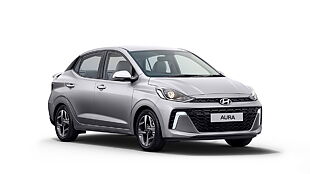
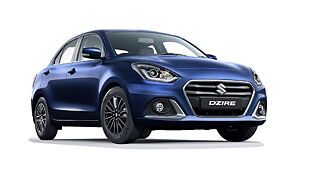
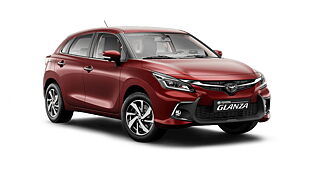
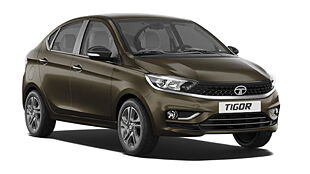
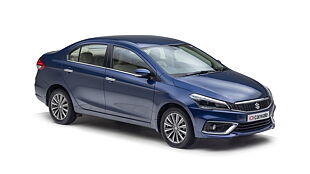
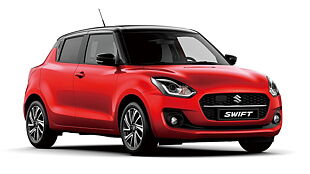


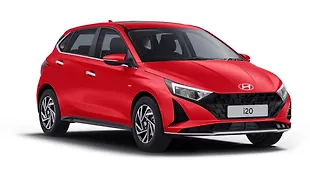
Colors
Reviews
- (7 Ratings) 7 Reviews
4.3/5
- Nice feature packed car and surely is value for moneyI was upgrading my hatchback car and was looking for a 6 lac budget sub 4 metre compact sedan. The Honda amaze was a very good option which has all the features like power steering, power windows, excellent boot space, decent mileage, stylish looks and good performance and that too at a very nominal price range. Very little maintenance charges for a year. Overall value for money.Rating parameters(out of 5)5
Exterior
5Comfort
4Performance
4Fuel Economy
5Value For Money
About the ReviewerPurchase NewDriven forFew thousand kilometersRead MoreWas this review helpful?00 - The great Honda cars!Car is Smooth in running and spacious legroom and fun driving. Although Average is low. Safety standards like ABS and EBD should have been in Old Amaze in Base model Like E model. New Amaze 2018 have everything in Base model Great job Honda! Thumbs up. Air conditioner is working great in all Honda cars!Rating parameters(out of 5)4
Exterior
5Comfort
5Performance
4Fuel Economy
5Value For Money
About the ReviewerPurchase NewDriven forFew thousand kilometersRead MoreWas this review helpful?00 - Purchased in Oct 2015, Drived few thoudand, Happy Till nowExterior Good looking but Exterior metal is thin and should improve.. Interior (Features, Space & Comfort) Simple. Can Honda give more than this in such price Engine Performance, Fuel Economy and Gearbox Space, Fuel Economy (I am getting 16 km in city - Driving from Ghaziabad to Noida). Last month went to high and got 19 Km per h. But yes i drived between 80-90 km/hr. Gearbox: smooth Engine: Most of the time ...no noise. Ride Quality & Handling Easy & simple. You will enjoy loving it Lot of people mentioned about low clearance but I could not found any issue till now. Final Words I have compared lot of cars (Zest, Dzire etc) before i made the decision. I will say go for it. I liked the Honda feedback follow up. They took at multilevel's. Areas of improvement Exterior metal is thin even fom small push panel will get dant Space, Fuel Econmoy, lookminor noise from cabin, Exterior metal is thinRating parameters(out of 5)4
Exterior
4Comfort
4Performance
4Fuel Economy
4Value For Money
About the ReviewerPurchase NewDriven forFew thousand kilometersMileage16 kmplRead MoreWas this review helpful?00
- Home
- Honda Cars
- Amaze [2013-2016]
- 1.2 E i-VTEC


